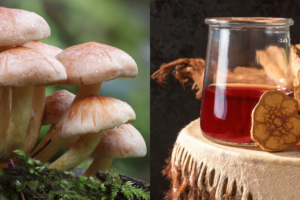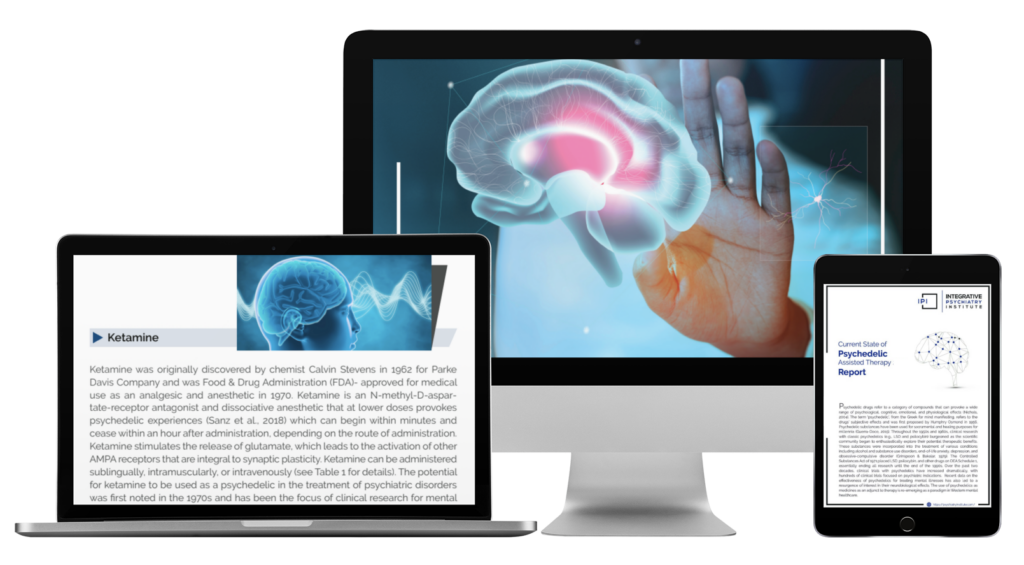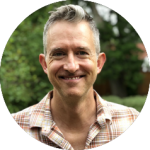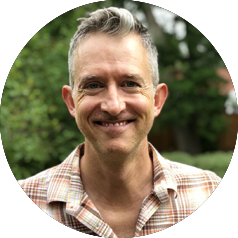
In recent years, there has been a significant surge in the popularity and interest surrounding Ayahuasca ceremonies, especially among individuals seeking alternative approaches to healing and personal growth. This growing fascination can be attributed to various factors, including increased accessibility, widespread media coverage, and the influence of influential figures advocating for its therapeutic potential.
We will explore how the consumption of Ayahuasca can lead to experiences of self-awareness, emotional healing, and spiritual growth, as well as what to look out for.
What Are Ayahuasca Ceremonies?
Ayahuasca ceremonies are traditional rituals that have been practiced for centuries by indigenous communities in the Amazon. These ceremonies involve the consumption of a powerful psychoactive brew called Ayahuasca, which is typically made from a combination of two plants: Banisteriopsis caapi (ayahuasca vine) and Psychotria viridis (a plant containing the psychedelic compound DMT).
The indigenous people consider Ayahuasca as a sacred plant medicine that facilitates spiritual exploration and healing.
It’s important to note that the compounds in Ayahuasca are illegal in most countries. There are instances where Ayahuasca is legal even in those countries as a ritual for religious reasons. Always make sure to understand the laws in your area.
The Preparation
Preparing for Ayahuasca ceremonies is vital for ensuring safety, maximizing benefits, cultivating receptivity, respecting cultural traditions, and facilitating effective integration. There is a wide variety of preparation practices some of which include:
- Purification: Many traditions emphasize the importance of purifying the body and mind before participating in a ceremony. This can involve practices such as fasting, abstaining from certain substances like alcohol and caffeine, as well as engaging in activities like meditation, yoga, or prayer to cultivate a focused and clear mindset.
- Dietary restrictions: Prior to a ceremony, participants are often advised to follow a specific diet. These dietary restrictions typically exclude certain foods and substances that may interact.
- Mental preparation: Ceremonies can be intense and emotionally challenging. Many traditions now include some form of mental preparation before participating. This may involve setting intentions for the ceremony, reflecting on personal goals and aspirations, and cultivating a mindset of openness, surrender, and self-reflection.
Ceremonial Setting
In Ayahuasca ceremonies, creating a sacred and supportive environment is crucial for a meaningful experience. The ceremonial space is often prepared, cleansed, and adorned with symbolic elements. Ritual objects such as sacred plants, crystals, and musical instruments may be used to contribute to the ceremonial energy.
Traditional practices passed down through generations, including chants, sacred songs, and invocations, are led by shamans and facilitators to guide participants in connecting with the spirit of Ayahuasca and the healing energies of the ceremony.
Sacred Space
Ayahuasca ceremonies are often held in carefully prepared spaces, such as ceremonial huts or specially designated areas. The intention behind creating a sacred space is to generate a container that fosters connection, safety, and reverence for the spiritual journey ahead.
Ritual objects
Various ritual objects may be used during Ayahuasca ceremonies to enhance the experience. These objects can include sacred plants, flowers, crystals, tobacco, feathers, or musical instruments like rattles, drums, and harmonicas. Each object holds its own symbolic meaning and contributes to the ceremonial energy and intention.
Traditional Practices
Ayahuasca ceremonies often incorporate traditional practices that have been passed down through generations. These practices can include specific chants, icaros (sacred songs), prayers, or invocations. Shamans and facilitators may lead these practices, guiding participants in connecting with the spirit of Ayahuasca and the healing energies of the ceremony.
What does it feel like?
Once participants consume Ayahuasca, they enter into a unique experience. The effects will vary among individuals, but there are some common psychological and physical experiences:
- Onset of effects: After drinking Ayahuasca, it usually takes around 30 minutes to an hour for the effects to begin. The onset may be gradual, with initial feelings of relaxation, heightened sensory perception, and introspection, or sudden with a wave of feelings.
- Duration: The duration of an Ayahuasca experience typically lasts between 4 to 8 hours from one dose, with variations depending on the potency of the brew and individual factors. The effects may peak after 2 to 3 hours and gradually subside, leading to a period of integration and reflection. Many ceremonial leaders will offer additional doses over a period of time.
- Psychological experiences: Ayahuasca can induce a range of psychological experiences, including vivid or symbolic visions, emotional release, introspection, heightened awareness, and a sense of expanded consciousness. Participants may also experience a purging process, which can involve vomiting or diarrhea, often viewed as a cleansing of emotional or energetic blockages.
- Physical sensations: Ayahuasca can also induce various physical sensations, such as increased heart rate, changes in body temperature, enhanced sensory perception, and altered perceptions of time and space.
The Science Behind Ayahuasca
Ayahuasca is a complex brew that typically consists of two main ingredients: Banisteriopsis caapi, also known as ayahuasca vine, and the leaves of Psychotria viridis or other DMT-containing plants. The combination of these two components creates a synergistic effect that produces the transformative experiences associated with Ayahuasca.
Chemical Composition of Ayahuasca
Banisteriopsis caapi contains harmine, harmaline, and other harmala alkaloids, which are classified as MAOIs (monoamine oxidase inhibitors). These compounds play a crucial role in allowing the psychoactive effects of DMT to be orally active. The DMT-containing plants, such as Psychotria viridis, contribute the primary psychoactive compound, dimethyltryptamine (DMT).
Dimethyltryptamine and Monoamine Oxidase Inhibitors
DMT is a naturally occurring psychedelic compound found in various plants and the human brain. It is known for its powerful hallucinogenic effects. However, when consumed orally, DMT is rapidly broken down by enzymes called monoamine oxidases (MAOs) in the digestive system, preventing it from reaching the brain and producing its psychoactive effects.
The MAOIs present in Banisteriopsis caapi function by inhibiting the activity of these enzymes. This allows the DMT present in the Ayahuasca brew to enter the bloodstream and cross the blood-brain barrier, leading to profound alterations in perception, consciousness, and spiritual experiences.
Neurological effects
The effects of Ayahuasca on neurological functioning and brain activity have been the focus of scientific investigation. Here are four key effects observed during Ayahuasca experiences:
- Increased Neural Connectivity: Studies using fMRI have shown that Ayahuasca (DMT) leads to a temporary boost in neural network integration, allowing for enhanced information exchange and potential alterations in perception and cognition.
- Altered States of Consciousness: Ayahuasca (DMT) is renowned for inducing profound changes in consciousness. EEG studies have revealed distinctive patterns of brain activity during Ayahuasca experiences, characterized by an increase in alpha, theta, and gamma waves. These alterations in brain wave activity coincide with subjective reports of expanded awareness, introspection, and spiritual insights.
- Modulation of Serotonin System: Ayahuasca interacts with the serotonin system in the brain, specifically targeting serotonin receptors. The active compounds in Ayahuasca, such as DMT and harmala alkaloids, likely affect the release, reuptake, and binding of serotonin.
- Visual Imagery and Hallucinations: Ayahuasca often induces vivid visual imagery, intricate patterns, and hallucinatory experiences. This phenomenon is associated with increased activation and connectivity in brain regions involved in visual processing, such as the primary visual cortex and the default mode network.
Ayahuasca and Psychedelics

The Experience
Ayahuasca’s status as a powerful psychedelic substance arises from its profound effects on consciousness and perception. When consumed in ceremonial settings, Ayahuasca induces a unique and transformative experience that can be compared to other psychedelic journeys.
Comparisons can indeed be drawn between Ayahuasca ceremonies and other psychedelic experiences, such as those induced by psilocybin mushrooms or LSD. While each substance has its own distinct characteristics, there are notable similarities in the psychological states they evoke.
One commonality is the alteration of perceptions. Ayahuasca is known to induce visual, auditory, and sensory distortions, often accompanied by intense emotions. Similarly, substances like psilocybin and LSD can also lead to perceptual shifts, including vivid visuals, synesthesia (cross-sensory experiences), and enhanced sensory perception.
Therapeutic Potential
Research suggests that psychedelics, including Ayahuasca, hold great promise as potential therapeutic interventions for various mental health conditions. Here are five key points supporting this idea:
- Depression: Studies have shown that psychedelics, including Ayahuasca, can have rapid and sustained antidepressant effects. Ayahuasca’s psychedelic experience is believed to promote neuroplasticity, which can contribute to improved mood and emotional well-being.
- Anxiety: Psychedelics have demonstrated potential in reducing anxiety symptoms by modulating serotonin receptors in the brain. Ayahuasca, with its unique chemical composition, including DMT and MAOIs, has been found to produce anxiolytic effects and promote calmness and relaxation.
- PTSD: Research indicates that psychedelics, including Ayahuasca, can aid individuals with PTSD by facilitating the processing and integration of traumatic memories. Ayahuasca’s ability to induce altered states of consciousness and enhance emotional processing provides a safe environment to work through traumatic experiences.
- Addiction: Studies have shown that psychedelics, including Ayahuasca, can effectively treat addiction by promoting self-reflection, increasing motivation for change, and facilitating emotional healing.
- Therapeutic Effects: The therapeutic effects of Ayahuasca and other psychedelics are believed to be mediated by their ability to promote neuroplasticity, enhance emotional processing, and facilitate personal insights.
Conclusion
Ayahuasca holds promise as a potential therapeutic intervention for various mental health conditions. Its ability to promote neuroplasticity, enhance emotional processing, and facilitate personal insights offer exciting possibilities for mental health treatment.
However, careful consideration must be given to the potential risks and challenges associated with its use.







